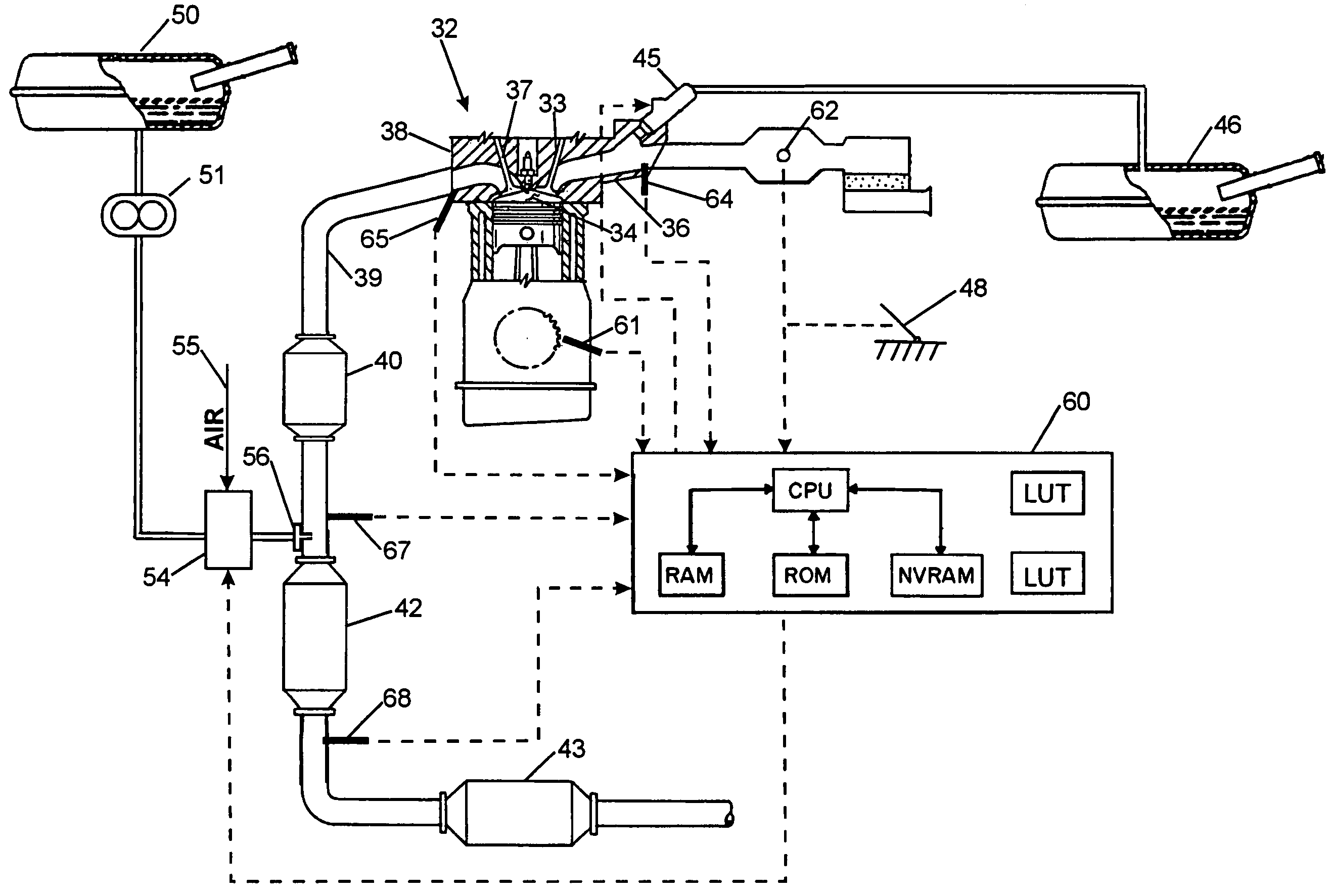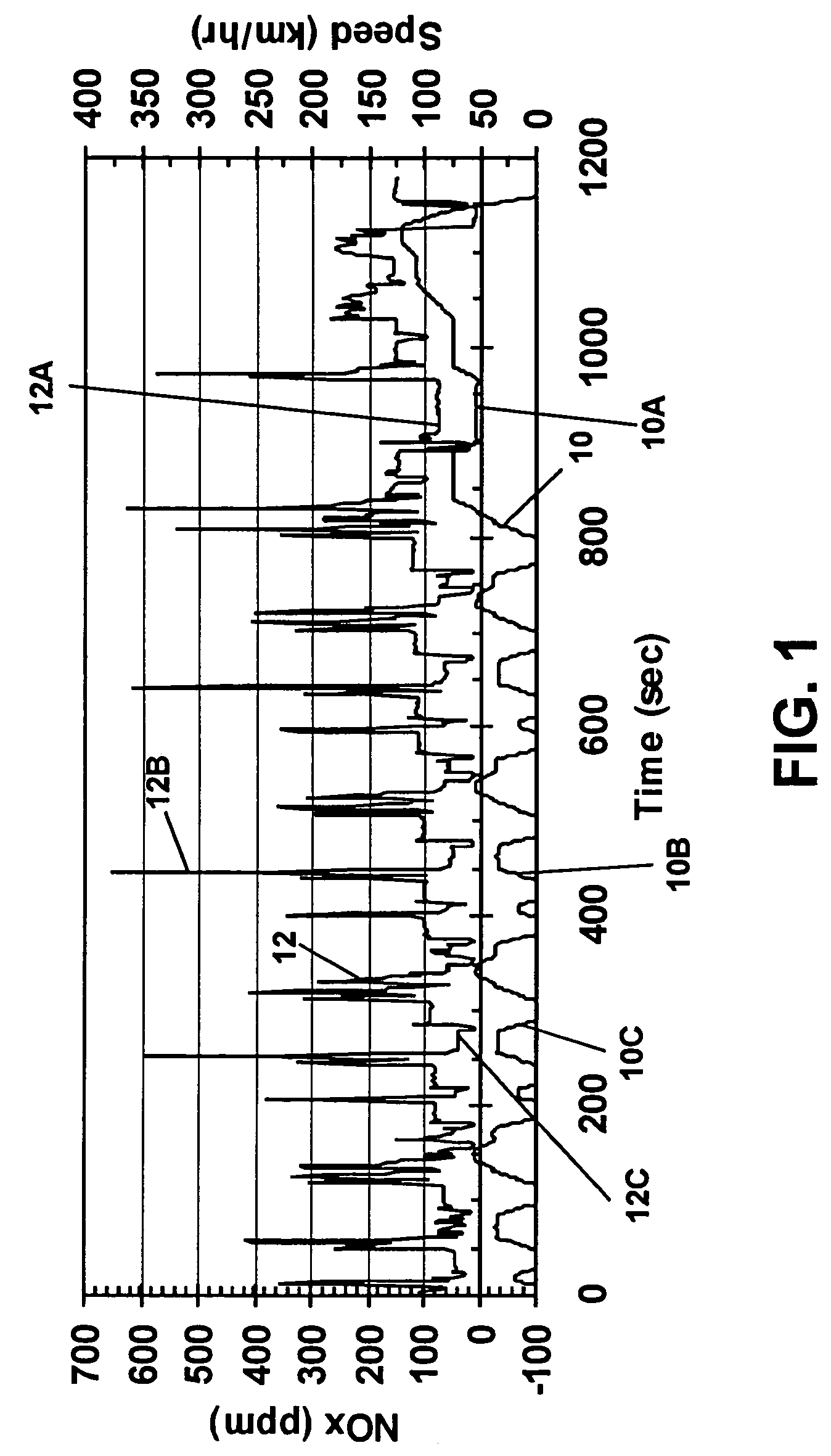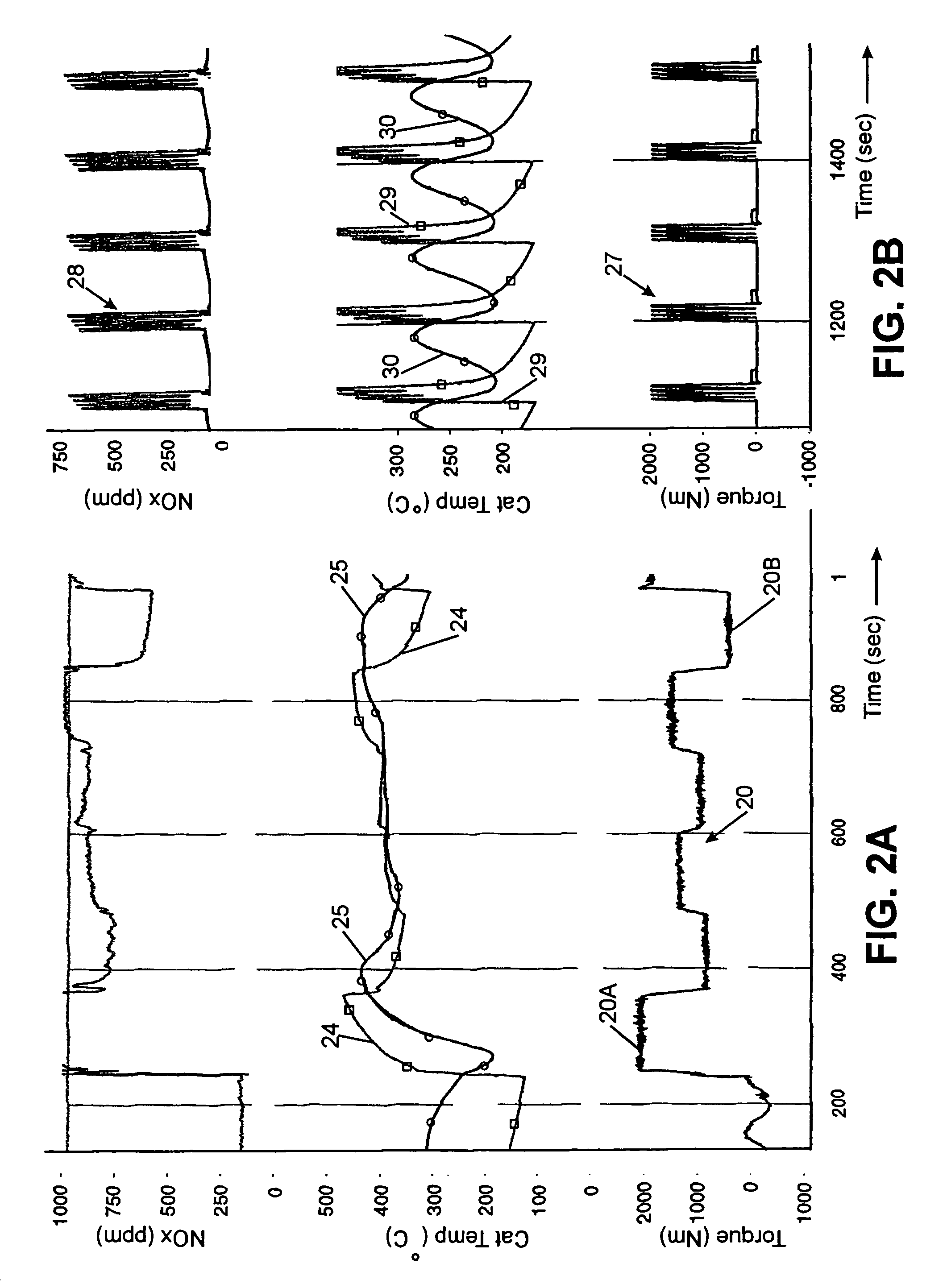Control system for mobile NOx SCR applications
a control system and mobile technology, applied in the direction of exhaust treatment electric control, separation process, instruments, etc., can solve the problems of limiting the amount of nitrogen oxides that can be emitted, difficult catalytic reduction of nitrogen oxides, and insufficient combustion and engine modifications to meet the more stringent levels
- Summary
- Abstract
- Description
- Claims
- Application Information
AI Technical Summary
Benefits of technology
Problems solved by technology
Method used
Image
Examples
Embodiment Construction
[0082]Referring now to the drawings wherein the showings are for the purpose of illustrating a preferred embodiment of the invention only and not for the purpose of limiting the same, there is shown in FIG. 1 an MVEG test conducted with a test vehicle equipped with a 1.9 liter turbocharged, direct injection (TDI) diesel engine, i.e., a light duty test vehicle. The invention will be described throughout as applicable to a diesel engine, but as indicated above, the invention, in its broader sense, is applicable to any internal combustion (IC) engine, such as gasoline fuel type engines operated lean or with “lean burn” engine fuel strategy.
[0083]In FIG. 1, the European MVEG cycle is plotted in seconds on the x-axis with the nitrogen oxides (NOx) emitted by the vehicle during the drive cycle plotted on the left-hand y-axis and the vehicle speed plotted in km / hr on the right-hand y-axis. The lower trace identified by the reference numeral 10 is a plot of the vehicle speed over the timed ...
PUM
 Login to View More
Login to View More Abstract
Description
Claims
Application Information
 Login to View More
Login to View More - R&D
- Intellectual Property
- Life Sciences
- Materials
- Tech Scout
- Unparalleled Data Quality
- Higher Quality Content
- 60% Fewer Hallucinations
Browse by: Latest US Patents, China's latest patents, Technical Efficacy Thesaurus, Application Domain, Technology Topic, Popular Technical Reports.
© 2025 PatSnap. All rights reserved.Legal|Privacy policy|Modern Slavery Act Transparency Statement|Sitemap|About US| Contact US: help@patsnap.com



